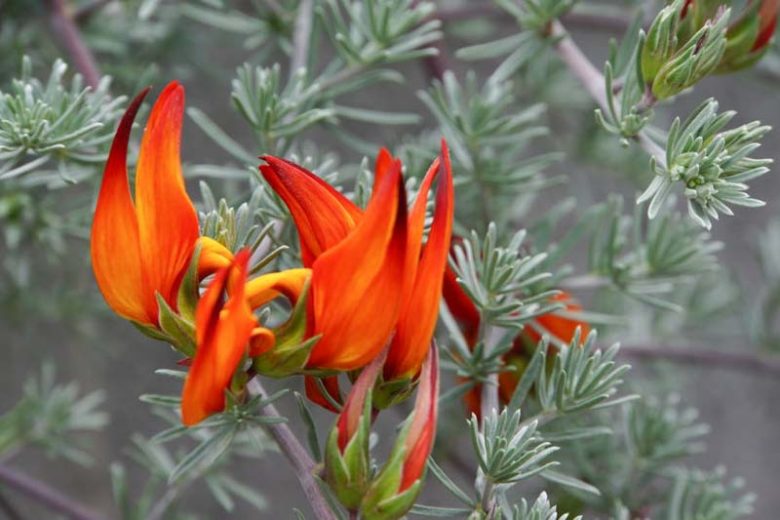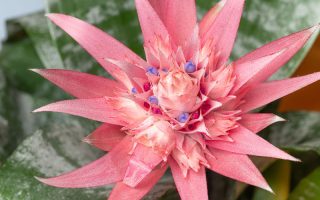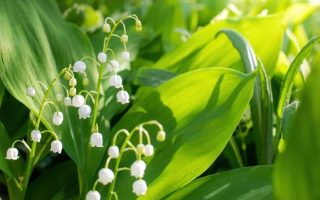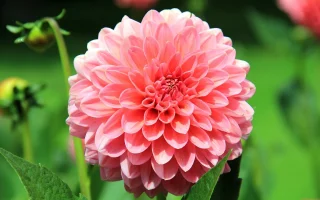lettersforvivian.org – The Parrot’s Beak flower (Lotus berthelotii) is a striking and exotic plant known for its vibrant, curved blooms that resemble the colorful beak of a parrot. Native to the Canary Islands, this plant has earned its name due to its distinctive flower shape, making it a popular choice in gardens and landscapes where bold color and unique aesthetics are desired. With its trailing vines and bright, tropical blooms, the Parrot’s Beak is perfect for hanging baskets, containers, or cascading over garden walls.
What is the Parrot’s Beak Flower?
Parrot’s Beak (Lotus berthelotii) is a member of the Fabaceae (legume) family, native to the Canary Islands. It is a perennial plant that thrives in warm, sunny climates and is often grown as an ornamental in temperate gardens. Known for its striking, orange to red flowers that resemble the beak of a parrot, this plant is admired for both its unusual shape and its bright color. The Parrot’s Beak is also a low-maintenance plant that is well-suited to hanging baskets, containers, and garden borders.
The plant itself has a sprawling, semi-woody growth habit with long, trailing stems that can reach 3 to 4 feet in length. The leaves are small, gray-green, and typically round or oval in shape. However, it is the vibrant, curved flowers that steal the show. These flowers emerge in clusters along the stems and create a dramatic visual impact with their bold colors and unique shape. The plant is commonly used in gardens to add texture, vibrant color, and a touch of tropical flair.
Characteristics of Parrot’s Beak Flowers
The Parrot’s Beak flowers are the signature feature of the plant. The blossoms have a distinctive shape that closely resembles the curved beak of a parrot. Each flower consists of bright, tubular petals that are orange, red, or yellow, giving the blooms a fiery, tropical appearance. The flowers grow in dense clusters along the stems and create a vibrant display of color.
The individual flowers are about 1 to 2 inches long, and the overall flower clusters can span several inches in width. The flowers are known for their exotic and striking appearance, with some varieties having a slight sheen to the petals, enhancing their overall visual appeal. In addition to their unique shape, the flowers also attract pollinators such as bees and hummingbirds, making the Parrot’s Beak a wonderful addition to a wildlife-friendly garden.
The foliage of the plant is small and unassuming in comparison to the flowers. The gray-green leaves have a soft, silvery appearance and provide a subtle backdrop for the vibrant blooms. The plant has a trailing or spreading growth habit, making it ideal for use in hanging baskets, containers, or as ground cover.
Growing the Parrot’s Beak Flower
The Parrot’s Beak is a relatively easy-to-grow plant, though it does require some specific conditions to thrive. It is well-suited to warm, sunny climates and is often grown as an annual in cooler regions. However, in frost-free areas, it can be grown as a perennial. Here are some essential tips for growing the Parrot’s Beak:
- Planting: The Parrot’s Beak can be grown from seed or cuttings, though it is often more successful when propagated from young plants. If starting from seed, sow the seeds in early spring, and provide warmth and humidity to encourage germination. When transplanting young plants, choose a location with full sun to partial shade. It is also important to provide well-draining soil, as the plant is prone to root rot in waterlogged conditions.
- Location: This plant thrives in areas that receive full sun or partial shade. In warmer climates, it can tolerate the intense sun, but in cooler regions, some afternoon shade may be beneficial to protect the plant from cold winds or frost. Parrot’s Beak does best in a sheltered location where it is protected from harsh elements.
- Soil: The Parrot’s Beak prefers well-draining soil with a slightly acidic to neutral pH. It is not particularly demanding in terms of soil fertility but benefits from a light application of compost or organic matter to improve soil texture. Ensure that the soil drains well to avoid waterlogging, which can lead to root rot.
- Watering: This plant enjoys consistent moisture but is also drought-tolerant once established. Water deeply, allowing the soil to dry out slightly between waterings. During the hot summer months, it may require more frequent watering, but be cautious not to overwater, as excess moisture can lead to fungal issues and root rot.
- Fertilizing: Parrot’s Beak benefits from a light application of balanced fertilizer in early spring to encourage vigorous growth and flowering. However, it does not require heavy fertilization, and too much fertilizer can result in excessive leaf growth at the expense of flowers.
Care and Maintenance
The Parrot’s Beak is a relatively low-maintenance plant, but some care is necessary to keep it healthy and thriving:
- Pruning: Pruning is usually done after the flowering period to remove dead or spent stems and encourage fresh growth. Trim back any leggy or overgrown stems to maintain a tidy appearance and encourage the plant to produce more flowers. Regular pruning also helps prevent the plant from becoming too sprawling and unruly.
- Mulching: Apply a layer of mulch around the base of the plant to retain moisture, keep the soil cool, and suppress weed growth. Organic mulch such as shredded bark or compost is ideal for this purpose. Be sure to leave space around the plant’s stem to avoid rot.
- Pests and Diseases: The Parrot’s Beak is generally resistant to pests and diseases, but it can occasionally be affected by aphids, whiteflies, or spider mites. Regularly check the plant for any signs of pests, and treat them with insecticidal soap or neem oil if necessary. Overwatering can lead to fungal diseases, so it is important to ensure proper drainage.
- Winter Care: In regions with cold winters, Parrot’s Beak is best grown as an annual, as it is sensitive to frost. If growing it in colder climates, consider bringing the plant indoors or protecting it with frost covers when temperatures drop. In frost-free areas, the plant can survive as a perennial and may benefit from a light mulch to protect the roots during cooler months.
Symbolism and Cultural Significance
The Parrot’s Beak flower is admired not only for its striking appearance but also for its symbolic meaning in various cultures. Its bold, colorful blooms are often associated with tropical beauty and the vibrant energy of the tropics. The plant’s exotic nature and unusual shape have made it a symbol of uniqueness, creativity, and vitality.
In some cultures, flowers with bird-like shapes, such as the Parrot’s Beak, are seen as symbols of communication and freedom. The plant’s ability to attract hummingbirds and other pollinators further enhances its connection to the theme of nature’s vibrant communication systems.
Conclusion
The Parrot’s Beak flower is a visually captivating and low-maintenance plant that adds tropical beauty to gardens, balconies, and hanging baskets. With its vivid, bird-like blooms and trailing vines, this plant is perfect for adding color and texture to any outdoor space. Whether grown in containers, as ground cover, or cascading over garden walls, the Parrot’s Beak creates a dramatic and exotic display that draws attention and admiration.
Its resilience, ease of care, and ability to attract pollinators make it an excellent choice for gardeners looking for a unique and vibrant addition to their landscape. As a symbol of vitality, creativity, and tropical beauty, the Parrot’s Beak will continue to brighten gardens and bring joy to those who admire its stunning blooms.




